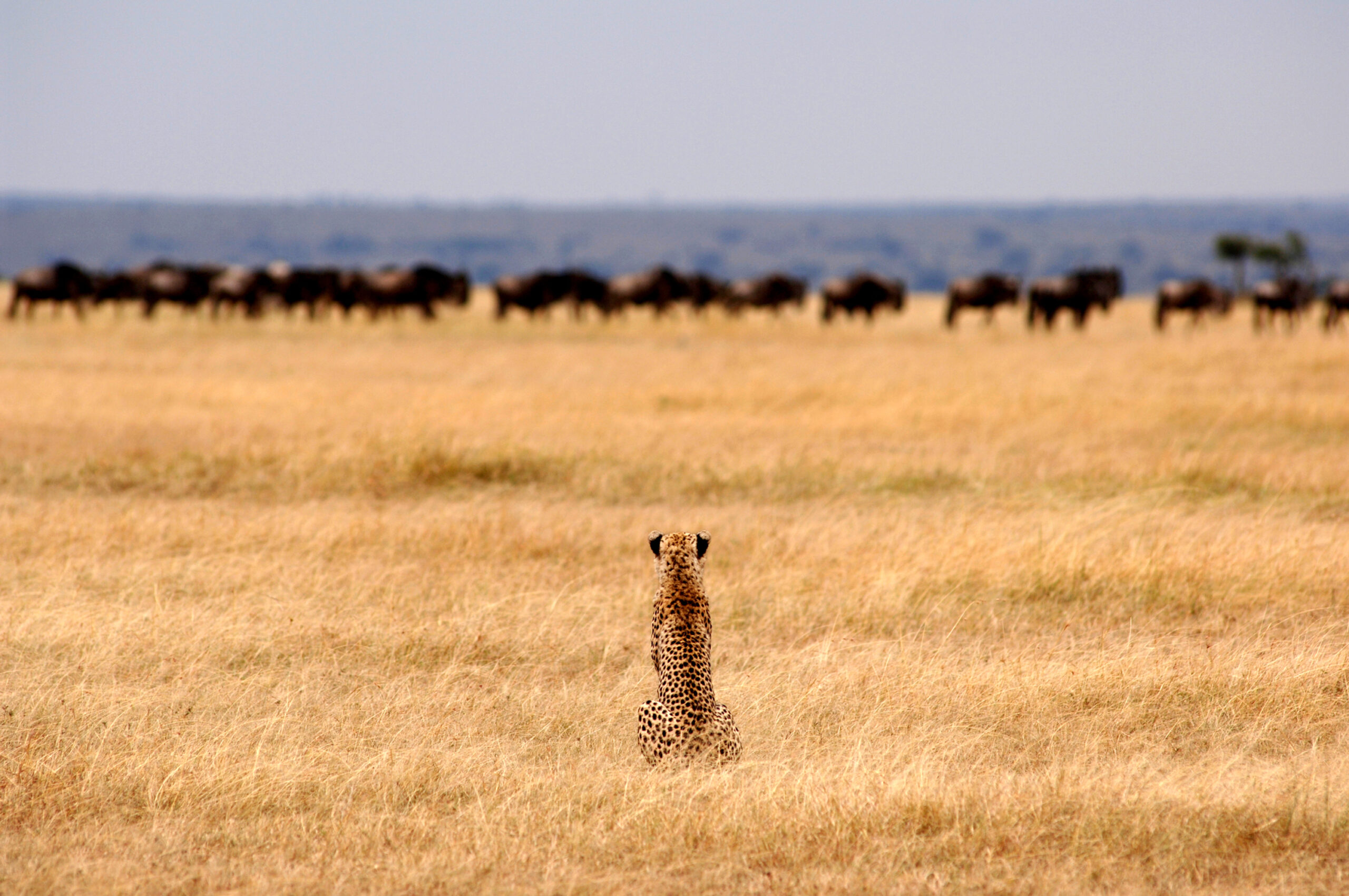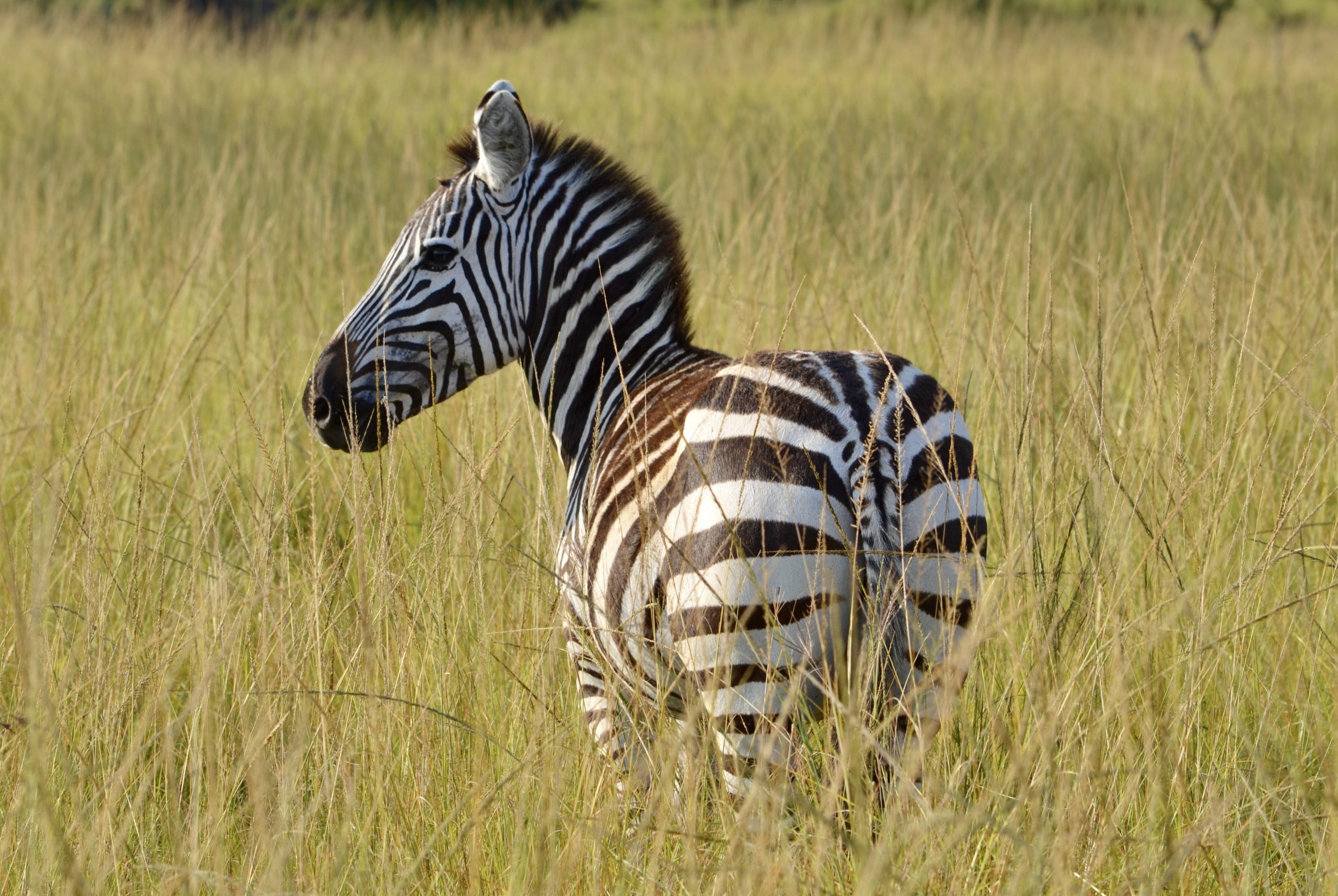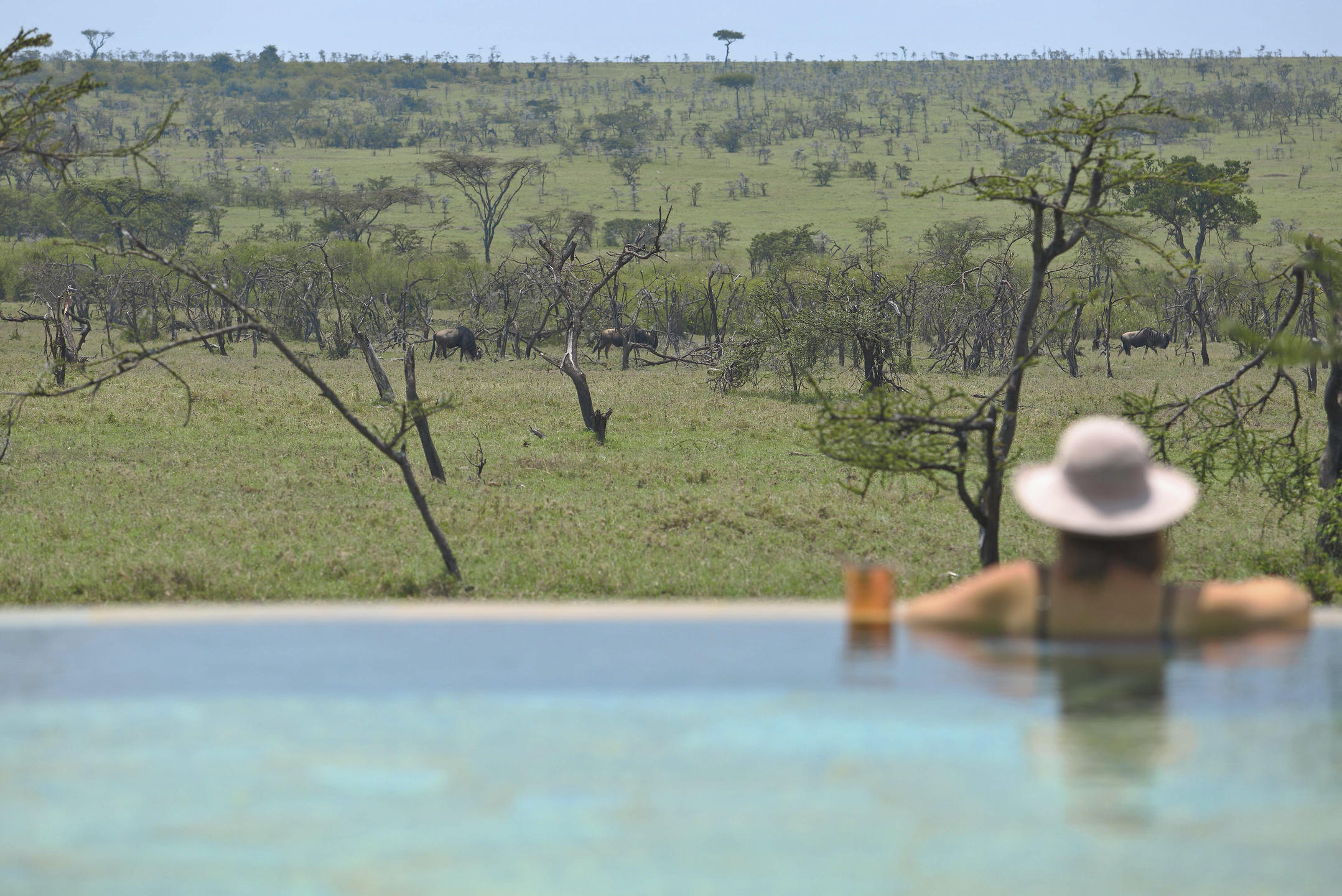The Great Migration in Kenya and Tanzania
PLANNING YOUR VISIT TO SEE THE MIGRATION IN EITHER KENYA OR TANZANIA
Many areas of the Masai Mara in Kenya and the Serengeti in Tanzania are home to rich resident wildlife including giraffe, zebra, impala, topi, hartebeest and predators such as lion, cheetah, hyena, leopard and sometimes wild dog. There is a plethora of fascinating small mammals like mongooses and bat eared foxes as well as a huge number of beautiful birds. The scenery is varied; wooded thickets suddenly open up to great rolling plains studded with lone trees or rocky outcrops, or dizzying plains stretching to the horizon.
Both Kenya and Tanzania offer multiple wildlife parks and reserves plus an outstanding coastline all the way down from northern Kenya to the south of Tanzania. Just off that coastline are a number of beautiful islands where you can relax on a white sand beach, swim, dive and snorkel in the warm sea, and where time revolves around the ocean.
A safari to the Mara or the Serengeti is often part of a larger itinerary which may include other wildlife areas or an extension to the coast – but you can spend your entire safari in either park absorbing the wonderful wildlife that each park has to offer. We recommend a minimum of 3 – 6 nights in the Mara or the Serengeti and if you stay for 6 nights you can visit two different areas to give a better overall experience.
Remember that the animals move according to short term weather patterns (within a broader general circuit), and the distances they cover can be vast and rapid. It therefore pays to allow yourself a little extra time, or to combine two camps in two different areas in order to have the best possible chance of seeing everything (this is especially important between April and June and during November which is a time when herds are particularly prone to unexpected behaviour).
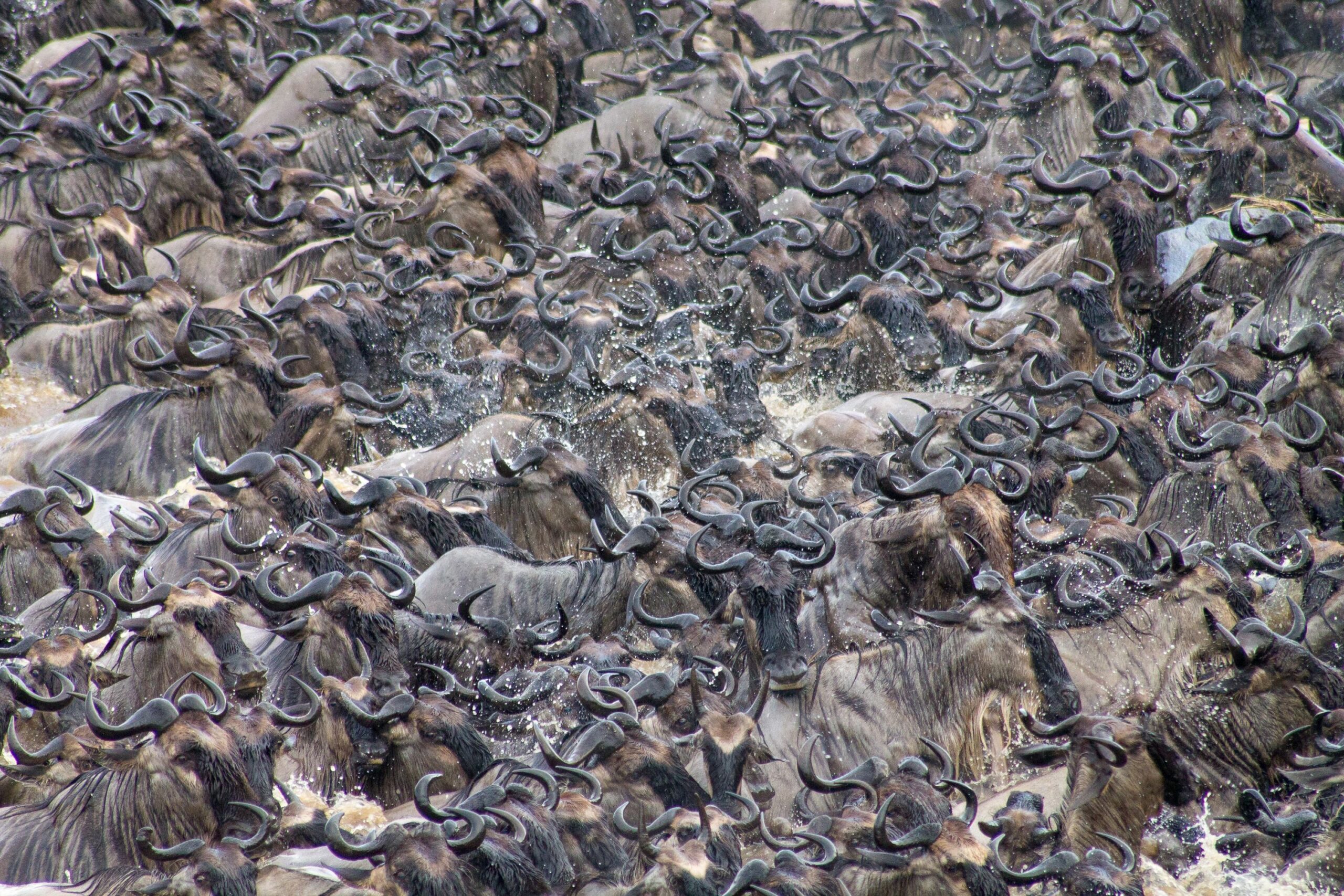
Do consider including a private guide and vehicle in your itinerary if your budget allows as this as this will give you maximum flexibility to plan your days as you please and to focus on the things that interest you. This is particularly true for river crossings which require all guests in the vehicle to be patient and committed to the challenge.
The key thing to remember is that all the wildlife is present in the Mara and the Serengeti year round. It is there regardless of where the wildebeest are and it’s worth travelling expecting to enjoy everything that the Mara or Serengeti have to offer. This might mean that you choose to spend 3 nights enjoying the excitement of the migration and all the drama this brings and then 3 nights in a quieter area of the park to sit and enjoy the wildlife at your own pace.
For example, if you are planning to visit Kenya then you might consider spending 3 nights in the heat of the dust and action around the river crossings in the Masai Mara Reserve and then 3 nights in a private conservancy just north of the reserve. There are a number of private conservancies to choose from and each offers outstanding wildlife viewing opportunities but where visitor numbers are limited and therefore the experience is much quieter.
The private conservancies are owned by the local communities who are paid a fair rent for their land by the camps operating on the conservancy. These camps in turn employ staff from the local communities and are heavily involved with funding schools, medical facilities and other local initiatives. A safari to a private conservancy can offer the chance to meet local people, visit a school or learn what the conservancy is contributing to wildlife conservation and the overall preservation of the Mara ecosystem.
Do also bear in mind that you don’t actually have to be where the migration is – this is where it is likely to be very busy as many people seek out the migration and focus totally on it. Some of the very best wildlife viewing we have experienced in the Serengeti and the Mara has been away from the migration, in quiet areas, away from the crowds and where the circle of life carries on regardless.
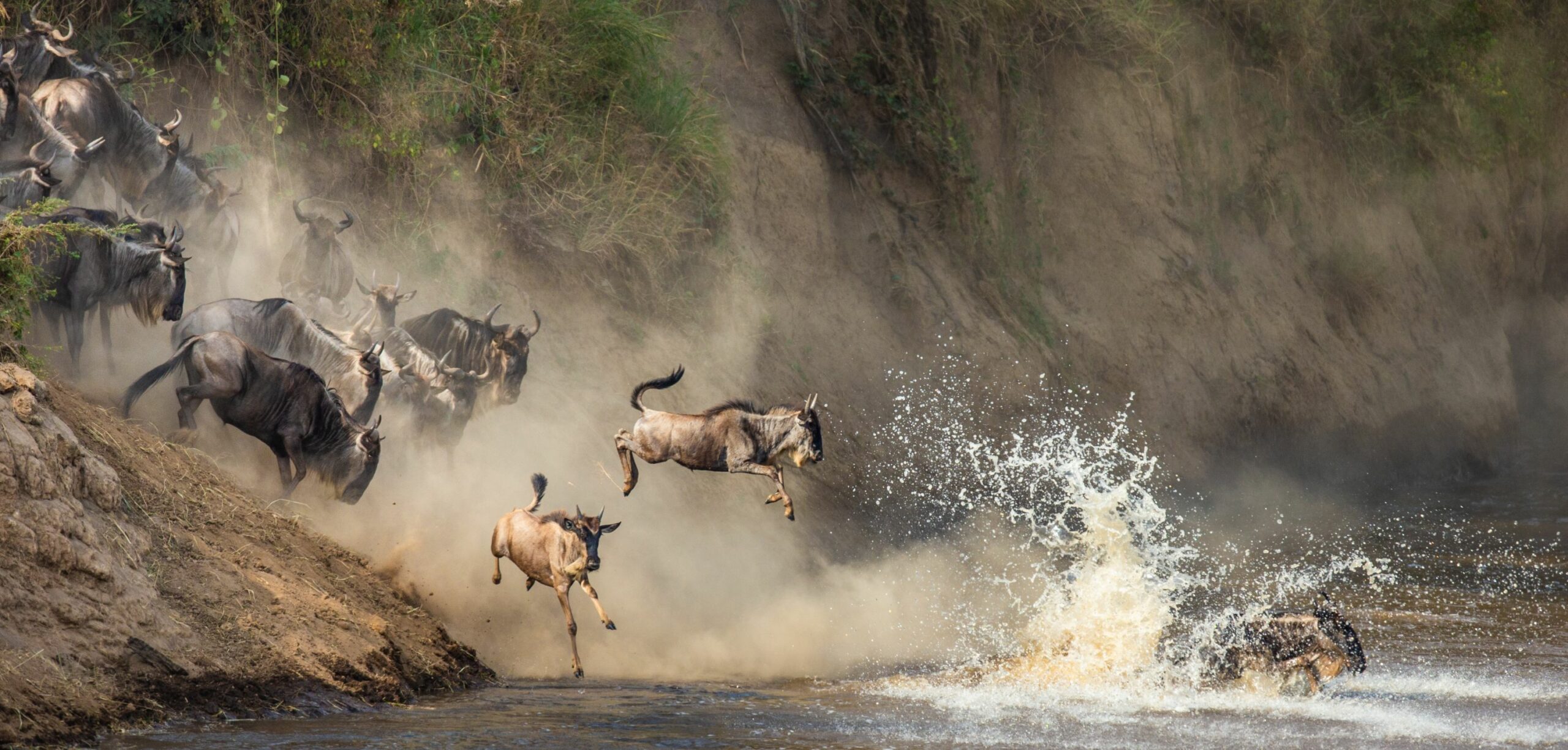
A QUICK GUIDE TO WHERE THE MIGRATION MIGHT BE THROUGOUT THE YEAR
This is not an exact science and the timing of the migration does vary annually depending on rain, localised weather and grazing opportunities. The whole migration revolves around where the best grass and water supply is likely to be at any given time. The migration will circle, turn around, cross and recross rivers and circle again. They will stop, split and regroup, walk in a line and then turn around again. But the migration does follow a time worn route even though the timing may be days or even weeks different from last year.
DECEMBER – APRIL: SOUTHERN SERENGETI PLAINS
The southern plains of the Serengeti ecosystem are where the wildebeest would like to call home and it’s where life begins for half a million wildebeest during the calving which usually takes place in February/March. The herds linger on this nutrient-rich grass, stretching from the southern extreme of the Serengeti National Park (SNP) and into the Ndutu area of the Ngorongoro Conservation Area (NCAA). As the plains start to dry out and food resources are depleted, the herds venture gradually west and north as their epic journey begins.

MAY: CENTRAL SERENGETI
So starts a period of transition as the herds start to move north heading ultimately for the Mara River. May usually sees the herds move into the Moru kopjes and central Seronera Valley areas of the Serengeti National Park, but depending on the rains, we may also see herds further south still, or approaching the western corridor.

JUNE: WESTERN SERENGETI
The transitional period continues, with June frequently being a superb time to see the migration in the western corridor, and here the herds face their first major obstacle in the form of the Grumeti River with its mighty crocodiles. Weather patterns at this time of year have a huge impact on migration movements and the herds can split up to follow different migration routes, double back on themselves to Seronera and Moru, spread out and generally provide a challenge for our guides. In very dry years, the approach to northern Serengeti can be accelerated with the first wildebeest arriving in northern Serengeti as early as late June. At this time of year we strongly recommend a combination of camps to secure the best migration viewing.

JULY – OCTOBER: NORTHERN SERENGETI
The arrival of the migration to Northern Serengeti depends purely on weather conditions each year. When there is plenty of food and water the herds will take their time and spend longer in Western and Central Serengeti areas, arriving in the north as late as early August. If conditions are dry, the first wildebeest will forge north towards the Mara river, a permanent water source, and a reliable supply of green grazing, and arrive as early as late June or early July. The Mara River crossings that take place over this period are the stuff of wildlife documentaries and make for dramatic viewing. They can happen at any point during this time of year, as herds criss-cross back and forth chasing the clouds; but they are elusive, rapid and unforgettable experiences. An experienced, patient guide is essential to give the best chance of catching a crossing.

NOVEMBER: CENTRAL SERENGETI
As the short rains fall, renewing more fertile grazing further south, so the herds begin to move south. November is another very unpredictable month when herds can be as far south as Ndutu or remain in the north for much of the month. The herds will often split and take several different routes to the south and central Serengeti/Moru kopjes can be an excellent base to reach sizeable herds. Combining locations over this period is often a smart way to keep up with nature.

If you are planning a safari to Kenya or Tanzania do give us a ring first – we would be delighted to talk you through the seasons and the migration and offer recommendations for both your safari to the Masai Mara or Serengeti and your overall itinerary. We have visited kenya and Tanzania many times at different times of the year and stayed at many of the camps and lodges throught both countries and we are always happy to share our expereince and expertise.
Call us on 01984 667420 or email [email protected] to start planning your African adventure!
